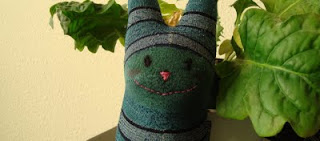Whilst we, my New York family and I, sat calmly in the lounge, some playing video games, others watching, we heard a loud thud; a bird had crashed head on into the large glass panes of the front window. We raced to see if it was still there, it was; the bird was unconscious and hanging from a branch by one foot. Filled with pity and a little fear, I grabbed a towel and, under the supervision and encouragements of my beautiful stepsisters and husband, gently lowered the bird to the floor, allowing it to recuperate from it's collision. It flew away not too long after, avoiding an enthousiastic photoshoot. I sure hope it's ok.
The stunned bird was a gorgeous Blue Jay (Cianocitta cristata). Blue Jays are common birds that are present throughout the year from Central to Eastern North America. If their flashy blue, black and white colouration didn't give them away, this large songbird's booming jeer should help you pin point them quite easily (click here to listen). They genereally produce their calls when perched and are silent in flight.
Interestingly enough, the only pigment present on the Blue Jay's feathers is melanin, which make up the dark brown/black patterns on the tail, wings and the collar. The blue is caused by how light scatters or refracts through feather's barbs. This explains why on days when the sun is hidden behind a thick veil of clouds, Blue Jays appear more greyish that on beautiful sunny days.
Speaking of feathers, Blue Jays, perform anting, a practice by which a bird uses ants or subtances created by ants for preening (tidying their feathers) during moutling. Apparently, some individuals have been observed tripping over their owns tails whilst zealously trying to apply the ants to hard to reach feathers. (Now that I would love to see!)
Male and female Blue Jays are practically identical, they can be told apart by keen observers from their behaviour during mating season. The male can be observed feeding the female either in their newly built nest or on a nearby branch, this is refered to as courtship feeding. A practice also observed in humans, if you are lucky.
I have had the utmost pleasure extracting Blue Jays from mist nets, at the McGill's Bird Observatory. There is nothing quite like holding a live wild bird. If I had known at the time, I may have kept a stash of acorns in my pocket as it is their favorite snack. However, I was quite busy trying to untangle their tongue (yes, you read right) and feet from the net without braking anything in the process - they thrash around so vigorously.
Blue Jays are not known for migrating, actually, we know very little about their wintering habits. Sometimes they migrate south, others they don't. Nevertheless, I very much like seeing them add a touch of colour to the slumbering winter landscape.
For more information on this beautiful bird and others, check out Hinterland's Who's Who.




![Reblog this post [with Zemanta]](http://img.zemanta.com/reblog_e.png?x-id=2b6d8f16-f967-43ec-8bb8-5c12c51b87d9)




![Reblog this post [with Zemanta]](http://img.zemanta.com/reblog_e.png?x-id=47c7dc0b-bf6b-449e-a372-4545d2455bd3)









![Reblog this post [with Zemanta]](http://img.zemanta.com/reblog_e.png?x-id=6622ee68-9ccf-430e-a61c-c84580795de1)





![Reblog this post [with Zemanta]](http://img.zemanta.com/reblog_e.png?x-id=28686f78-ef7d-4527-ada5-976368e759d7)